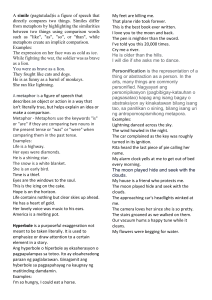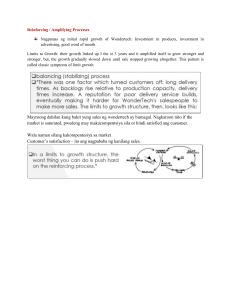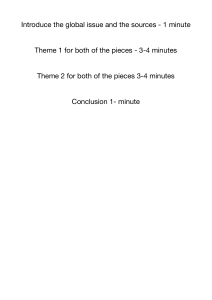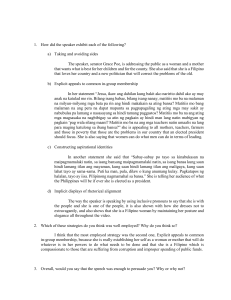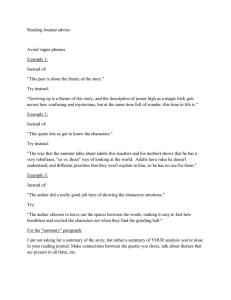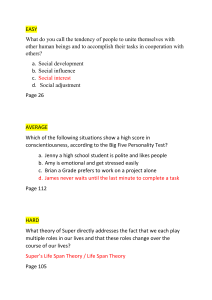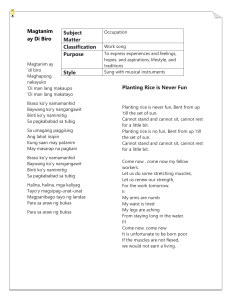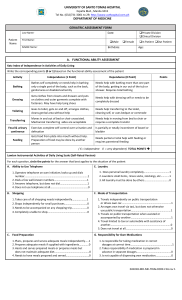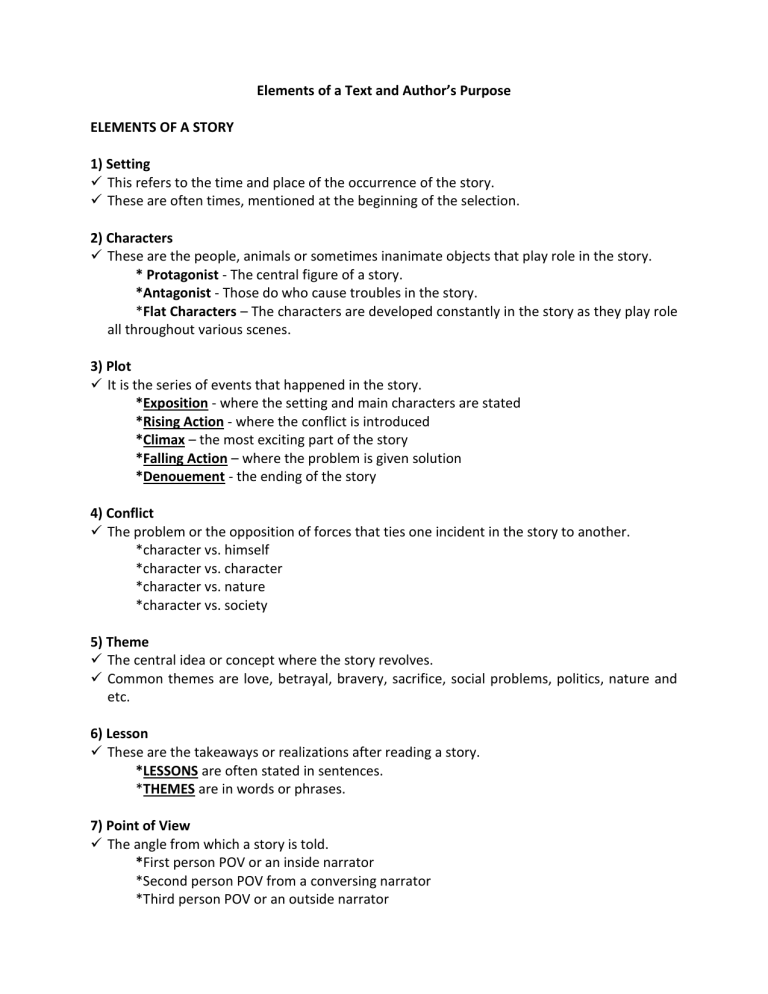
Elements of a Text and Author’s Purpose ELEMENTS OF A STORY 1) Setting This refers to the time and place of the occurrence of the story. These are often times, mentioned at the beginning of the selection. 2) Characters These are the people, animals or sometimes inanimate objects that play role in the story. * Protagonist - The central figure of a story. *Antagonist - Those do who cause troubles in the story. *Flat Characters – The characters are developed constantly in the story as they play role all throughout various scenes. 3) Plot It is the series of events that happened in the story. *Exposition - where the setting and main characters are stated *Rising Action - where the conflict is introduced *Climax – the most exciting part of the story *Falling Action – where the problem is given solution *Denouement - the ending of the story 4) Conflict The problem or the opposition of forces that ties one incident in the story to another. *character vs. himself *character vs. character *character vs. nature *character vs. society 5) Theme The central idea or concept where the story revolves. Common themes are love, betrayal, bravery, sacrifice, social problems, politics, nature and etc. 6) Lesson These are the takeaways or realizations after reading a story. *LESSONS are often stated in sentences. *THEMES are in words or phrases. 7) Point of View The angle from which a story is told. *First person POV or an inside narrator *Second person POV from a conversing narrator *Third person POV or an outside narrator THE AUTHOR’S PURPOSE Use the acronym P.I.E.C.E. Persuade Inform Entertain Compare Express 1) To PERSUADE To convince you to change your thinking, spend money, support a cause, or offer a solution to a problem. Examples are Advertisements/Commercials, Political Speeches, Church sermons or literature, Opinion Editorials, and Movie or book reviews 2) To INFORM To give information or describe something. Authors use facts and reasons to get the point across. Examples are Textbooks, News articles, Informational brochures, Encyclopedias, and Schedules, charts, instructions 3) To ENTERTAIN To attract the reader’s interest, or appeal to emotions such as pleasure, sadness, anger, or humor. Examples are Fiction books and other stories, Plays and movies, Comic strips, Video games, and Sports articles or programs 4) To COMPARE Examines the way two or more things are alike or different. Can have a secondary purpose to either inform or persuade. Examples are Comparison essays, Political analysis and Consumer or product reports 5) To EXPRESS To share a writer’s feelings or express opinions. Examples are Poetry, Songs, Blogs, Love Letters, Journals and diaries and Letters to the editor THE CONNECTION The elements of a story contribute to the reason as to what the author wants to impart on the reader. Setting is the context in which a story occurs. Just as a photograph has a foreground and a background, so does a story. The main characters and their actions form the foreground. The time and place of the events, and the social environment surrounding them, form the background. People exist in a particular time and place. Where your characters live may contribute to their personalities, values, attitudes, and even their problems. Your story’s setting can have great impact on the people in your story, how they react, and what they do. All of the other elements (setting, characters, plot, conflict) in the story complement each other to develop the selection’s overall theme (central idea.) Ultimately, the theme leads to a realization on the part of the readers (lesson) and from this, the author’s intent of writing the selection is achieved. Thus, author’s specific purpose may vary depending on other elements of the text such as lesson and theme. NEEDED PICTURES TO SEND SA SCHEDULED DATE LANG NATIN which is WEDNESDAY: COLLAGE #1: Sinasagutan ang English Modules Binabasa sa English book ang “Daedalus and Icarus” Binabasa sa English book ang “How Odin Lost His Eye” Format: Name Section Date English Subject COLLAGE #2: Isang picture na pinapanood ninyo ang LEARNING VIDEO na isisend ko ang link sa GC natin Isang picture na nakaharap yong cp ninyo na nandon ung LEARNING VIDEO na sinasabi ko Format: Name Section Date English Subject Guys, ito ung link ng LEARNING VIDEO na sinasabi ko sa inyo tungkol sa LEARNING VIDEO natin para sa Nov. 2-6 (ELEMENTS OF A TEXT AND AUTHOR'S PURPOSE).

